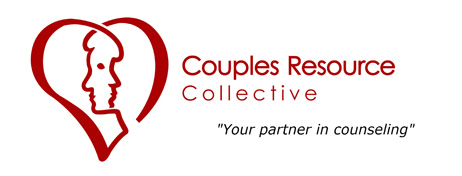Physical Abuse
The definition of physical abuse, according to the New York State Office of Children and Family Services, is: “Non-accidental use of force that results in bodily injury, pain, or impairment. This includes, but is not limited to, being slapped, burned, cut, bruised or improperly physically restrained.” Physical abuse is not limited to children and can happen to adults of any age. Neglect is also considered an aspect of physical abuse and this type of abuse often happens when one adult cares for another; such as in the case of an adult child caring for a parent.
Physical abuse often occurs alongside other forms of abuse such as financial, sexual abuse and emotional abuse. Physical abusers use their abusive behaviors to try to control their victims.
Who Suffers from Physical Abuse?
While anyone can suffer from physical abuse, physical abuse victims are most often women and often:
- Frail elderly
- Developmentally disabled
- Mentally ill
- Physically disabled
- Substance abusers
- Intimate partners
While it is never the fault of the victim, victims of physical abuse often feel shame and guilt over the abuse and hide the abuse from others. Victims are also typically afraid of what would happen if the physical abuse were found out. Unfortunately, this often allows physical abuse to go on unreported.
The Cycle of Physical Abuse
Physical abuse often occurs in cycles and not all parts of the relationship may be physically abusive. A physical abuse cycle often includes:
- Threats of violence, such as, “if you do that one more time, you’ll be sorry”
- The physical abuse itself such as hitting, burning or slapping
- Apologies by the abuser; the abuser may be extra attentive, “turn on the charm,” or buy gifts
- The cycle begins again, often with the abuser planning the next action of abuse
Examples of Physical Abuse
Physical abuse can range from relatively mild such as a slap, to severe such as the breaking of bones. An example of physical abuse in the words of one woman,
“…he broke into my house. He was breaking my fingers, to take my daughter out of my arms, because that was his way to control me and my other daughter was upstairs, that was late at night and he was going to take her from me because I had taken the children out for dinner, and he didn’t know where I was…”
Other examples of physical abuse include:
- Being physical restrained; such as being tied to a chair
- Being burned
- Being cut
- Being slapped, punched, kicked, bitten or choked
- Being stabbed or shot
- Withholding of food or medical attention
- Being drugged
- Being denied sleep
- Inflicting pain on other people or animals
Physical and Emotional Abuse Usually Travel Together
Physical and emotional abuse go hand-in-hand in many relationships. In fact, it’s rare to find physical abuse without the presence of emotional abuse (aka mental abuse). Often, when the physical abuser cannot physically abuse the victim, such as in public, they can emotionally abuse him or her.
Physical abuse is certainly harmful, however, emotional and mental abuse can be just as bad. Emotional abuse can lead to:
- Lack of self-worth
- Lack of independence
- Feeling like you’re nothing without the relationship
Physical and emotional abuse together in a relationship like a marriage can leave a person in fear for her life, yet too scared to leave the relationship.
Emotional Abuse
Emotional abuse is any type of behavior that purposefully hurts the other person mentally. Examples of emotional abuse include:1
- Yelling
- Name-calling
- Blaming
- Shaming
- Intimidation
Controlling behavior many also be considered emotional or physical abuse depending on its severity. Creating isolation around the victim is another form of emotional abuse.
Emotional abuse’s purpose is, in part, to make the victim completely dependent on the abuser. One subtle way of doing this is through financial abuse. Financial abuse, a form of mental abuse, is where the abuser severely restricts access to money, such as putting the victim on an allowance, preventing the victim from working or taking her credit cards.
Physical Abuse in Marriage Also Contains Emotional Abuse
Typically, within the environment of physical abuse, some components are physical while some are emotional abuse. All these tactics are designed to manipulate and control the victim while the abuser exerts his or her own power. Without the mental abuse “keeping the victim in line,” the physical abuse would be less effective and the victim would be more likely to leave the abusive relationship.
Some of the tactics of emotional abuse seen with physical abuse include:
- Dominance – as power and control are the main reasons for abuse, asserting dominance in any way possible – such as picking out your clothes – is frequently seen.
- Humiliation – one way to make a victim feel bad about themselves is to humiliate her in public such as tell stories about her to her friends.
- Isolation – one way to make a victim reliant on her abuser is to isolate her from social interaction so she feels she has no one to turn to for help and is less likely to leave the abusive relationship
- Threats – threats of physical abuse or abuse of others (such as pets or children) are frequently used to control a victim
- Intimidation – intimidation preserves the power and control the abuser has over the victim and reduces the chance that the victim will question the abuser – which is one of the goals of the abuser as he is typically seeking unquestioning obedience
- Denial and blame – abusers often attempt to make victims believe the abuse is their fault or deny that it happened at all. This invalidates the destructive effects of both the physical and emotional abuse and may make the victim believe it is all “in her head.”
People who are lesbian, gay, bisexual or transgendered may be facing other types of emotional abuse such as the threat of telling others of their sexual orientation or sexual identity.
It’s important to remember that these emotional abuses are just ways to maintain power and control over the victim, are just as unacceptable as the physical abuse itself and can leave scars that are just as long-lasting.

